Caligula - Barges of Lake Nemi
Joe Geranio

Caligula Seated on curule chair. This is the best representation of the physiognomy of Caligula I have seen on this CONSENSV Dupondius from Bern Historical Musuem. DIVUS AUGUSTUS. Died 14 AD. � Dupondius (29mm, 16.02 g, 7h). Rome mint. Struck under Gaius (Caligula), 37-41 AD. DIVVS AVGVSTVS, S C across field, radiate head left / CONSENSV SENAT ET EQ ORDIN P Q R, Gaius (Caligula) seated left on curule chair, holding a laurel branch in extended right hand and globe in left hand. RIC I 56 (Gaius); MIR 3, 11-5; BMCRE 90 (Gaius); BN 137 (Caligula); Cohen 87. Joe Geranio
The Nemi Ships were ships built by the Roman emperor Caligula in the 1st century AD at Lake Nemi. Although the purpose of the ships is only speculated on, the larger ship was essentially an elaborate floating palace, which contained quantities of marble, mosaic floors, heating and plumbing such as baths among its amenities. Both ships featured technology long thought to be recent inventions. It has been stated that the emperor was influenced by the lavish lifestyles of the Hellenistic rulers of Syracuse and Ptolemaic Egypt.
Lake Nemi (Italian: Lago di Nemi, Latin: Nemorensis Lacus) is a small circular volcanic lake in the Lazio region of Italy 30 km (19 mi) south of Rome. It has a surface of 1.67 km2 (0.64 sq mi) and a maximum depth of 33 meters (108 ft).
There is considerable speculation regarding why the emperor Caligula chose to build two large ships on such a small lake. From the size of the ships it was long held that they were pleasure barges, though, as the lake was sacred, no ship could sail on it under Roman law (Pliny the Younger, Litterae VIII-20) implying a religious exemption.[1]
Caligula particularly favoured the Egyptian Isis cult which he had established in Rome and also supported that of Diana Nemorensis whom, in the Roman tradition of syncretism, he likely viewed as an aspect of Isis.
Situated on opposite sides of the lake and atop the crater walls, are the towns of Genzano which was dedicated by the Romans to the goddess Cynthia, a cult associated with that of Diana Nemorensis and Nemi, which did not exist in Roman times. The name Nemi derives from the Latin nemus Aricinum (grove of Ariccia), Ariccia being an important nearby town associated with the worship of Diana and the god Virbius.[2] Located at Nemi are the ruins of an ancient temple dedicated to Diana, which was connected by the Via Virbia to the Via Appia (the Roman road between Rome and Brindisi).[3]
During the Roman empire the area around Genzano was used by wealthy Roman citizens for its clean air, uncontaminated water and cooler temperatures during the hot summer months. The lake has its own microclimate and is protected from wind by the crater walls. Goethe, Lord Byron and Gounod all lived in Nemi and seen the magical reflection of the Moon seen in the center of the lake during summer. This phenomenon is the source of the Roman name for the lake, Speculum Dianae (Diana 's Mirror).[3]
Local fishermen had always been aware of the existence of the wrecks, and had explored them and removed small artifacts. In 1446, Cardinal Prospero Colonna and Leon Battista Alberti followed up on the stories regarding the remains and discovered them lying at a depth of 18.3 meters (60 ft), which was too deep for effective salvage. They caused significant damage to the ships by using ropes with hooks to tear planks from them. Alberti learned little more than the type of wood and that it was covered in lead sheathing. In 1535, Francesco De Marchi dove on the wreck using a diving bell. From material recovered he added the knowledge that mortise and tenon joints had been used in their construction. Despite the successful salvage of entire structures and parts, there was no academic interest in the ships so no further research was performed and the objects recovered were lost and their fate remains unknown.[3]
By 1827, interest had revived and it had become a widespread belief that earlier material recovered had either been part of a temple to Diana or was from the villa of Caesar cited by Suetonius. Annesio Fusconi built a floating platform to recover the wrecks but was unsuccessful.[3]
In 1895, with the support of the Ministry of Education, Eliseo Borghi began a systematic study of the wreck site and discovered the site contained two wrecks instead of the one expected. Among the material Borghi recovered was the bronze tiller head of one of the rudders and many bronze heads of wild animals. Felice Barnabei, director general of the Dept of Antiquity and Fine Art submitted a report requesting the recovery cease due to the "devastation of the two wrecks." An engineer from the Italian Navy surveyed the site to determine the feasibility of recovering the two ships intact and concluded that the only viable way was to partially drain the lake.[3]
In 1927, the Italian dictator Benito Mussolini ordered Guido Ucelli to drain the lake and recover the ships. With the help of the navy, army, industry, and private individuals, an ancient Roman underground water conduit linking the lake to farms outside the crater was reactivated. After connecting the conduit to a floating pumping platform, on October 20, 1928, the lake level began dropping. By March 28, 1929, the water level had dropped 5 meters (16 ft), and the first ship (prima nave) broke the surface. By June 10, 1931, the prima nave had been recovered and the second ship (seconda nave) was exposed. By this time the water level had dropped more than 20 meters (66 ft) with over 40 million cubic meters of water removed. As a result of the weight reduction, on August 21, 1931, 500,000 cubic meters of mud erupted from the underlying strata causing 30 hectares (74 acres) of the lake floor to subside. Work ceased and, while the risks of continuing the project were debated, the lake began refilling. As the seconda nave had already partially dried out the submersion caused considerable damage. On November 10, 1931, the Minister of Public Works ordered the project and all research abandoned.[3]
On February 19, 1932, the Navy Ministry, which had been a partner in the recovery, petitioned the Prime Minister to resume the project. Joining with the Ministry of Education they received permission to take over responsibility and pumping to drain the lake recommenced on March 28. Due to technical problems the seconda nave could not be recovered until October 1932. A purpose built museum constructed over both ships was inaugurated in January 1936.[3]
Both vessels were constructed using the Vitruvian method, a shell first building technique used by the Romans.[1]
- Step 1: construction of the profile.
- Step 2: construction of the keel and the flat bottom up to the second order of cincti, in two phases.
- Step 3: construction of the shell up to the third wale (topgallant bulwarks).
- Step 4: Insertion of the ribs, first those with trabes (crossbeam bracing) and then those without.
The hull had been sheathed in three layers of lead sheeting to protect the timbers from shipworms; as there are none in fresh water lakes, this design feature was not only useless but costly. It is evidence that the ships hulls were constructed following standardized Roman shipbuilding techniques rather than being purpose built. The topside timbers were protected by paint and tarred wool with many surfaces decorated with marble, mosaics and gilded copper roof tiles. There was a lack of coordination between the structure of the hull and that of the superstructures, which suggests that naval architects designed the hulls, while civil architects then designed the superstructure to use the space available after the hulls were completed.[1] After their recovery, the ships hulls were found to be completely empty and unadorned.
They were steered using 11.3 meters (37 ft) long quarter oars, with the Seconda nave equipped with four, two off each quarter and two from the shoulders while the Prima Nave was equipped with two. Similar pairs of steering leeboards appear frequently in early 2nd century depictions of ships.[4]
The Seconda nave was almost certainly powered by oars, as structural supports for the rowing positions protrude along the sides of the hull. The Prima nave had no visible means of propulsion so was likely towed to the center of the lake when in use.[3]
A lead pipe found on one of the wrecks had Property of Gaius Caesar Augustus Germanicus stamped on it while many tiles had dates of manufacture. Together it leaves little doubt as to when the ships were built or for whom.[4]
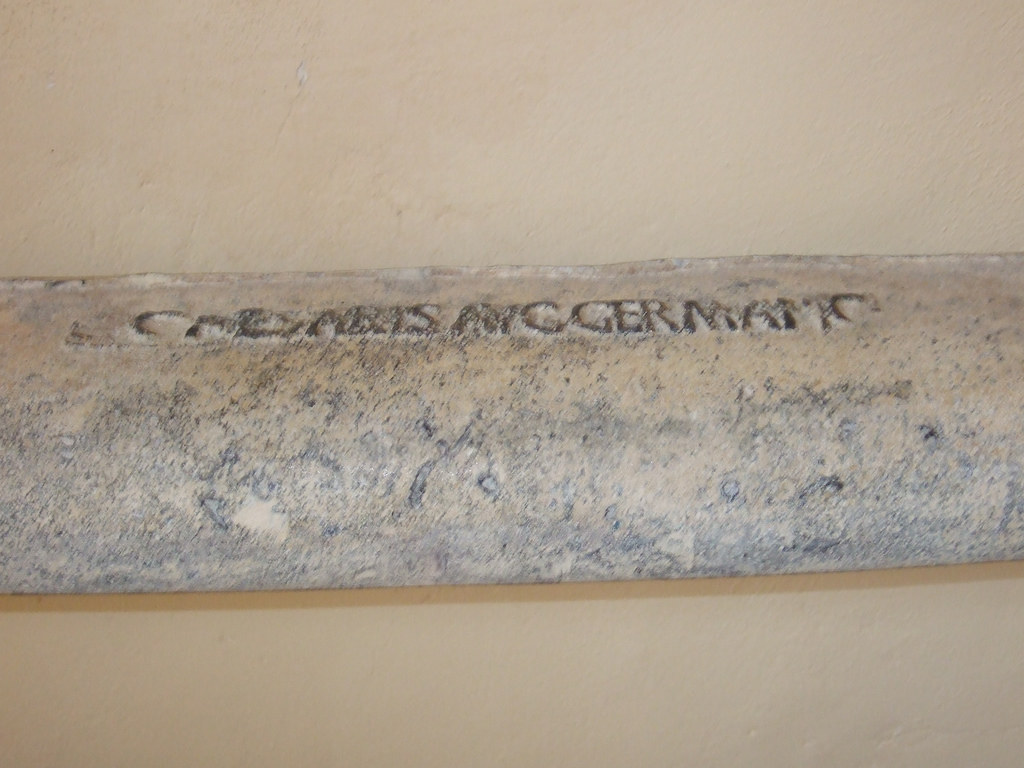
Caligula Water Pipe found on Boat Lake Nemi
The Romans produced suction force pumps in all types for all sea and land necessities. One of the archeological discoveries which most contributed to on/ knowledge of Roman metallurgy was the recovery of two ships of lake Nemi... These ships contained lead pipe (in the ship plumbing system), valves, pieces of equipment including a rotating table on ball bearings and several metallic objects made from various alloys of iron, copper and bronze which vary according to their intended use. The lead pipe conforms to the dimensions and norms set in Frontinus ' text... The inscriptions on the lead pipe found on the Nemi ships have done more to date the ships than the masonry trademarks... But the precise dating of the Nemi Ships based on the name of Caligula (37 to 41 A.D.) has been established by the for fstulae found three inside the first ship and the fourth nearby with their seal G. CAESARIS AVG GERMANIC all stamped with the same die (evidenced by the imperfect impression of the C on the various pieces of pipe)... The valve found on board is according to the standards a vicenaria in perfect working condition... The rotating platform found on the Nemi ship establishes that the Romans were acquainted with and used ball-bearings. Bronze bearings fixed in place by pins were positioned around the circumference of the platform at regular intervals to permit the rotary movement scythe load. Photo used with permission from (Photo by Nacleben)
One year after being launched, the ships were stripped of precious objects, ballasted and then intentionally sunk following the assassination of Caligula.[3]
Prima nave
The first ship recovered was 70 meters (230 ft) long with a beam (width) of 20 meters (66 ft).
The hull was divided into three "active" or main sections. The general shape of the hull appears wider at the stern and thinner at the bow, in fact, the main section is not amidships but is displaced towards the stern. The superstructures appear to have been made of two main blocks of two buildings each, connected by stairs and corridors, built on raised parts of the deck at either end. This distribution gives the ship a discontinuous look and has no similarity to any other ancient construction.[1]
Seconda nave
The second ship recovered was the larger at 73 meters (240 ft) in length and with a beam of 24 meters (79 ft).
The superstructure appears to have been made with a main section amidships, a heavy building at the stern and a smaller one at the prow. Although nothing remains of the stern and prow buildings their existence is indicated by the shorter spacing of the decks supporting cross beams and distribution of ballast.[1] The arrangement of the Seconda nave superstructures is comparable to that of the shrines depicted on an Isian lamp held by the Museum of Ostia. If not coincidental, this is further evidence of Isis worship rather than Diana.[1]
Technology
The discovery proved that the Romans were capable of building large ships. Before the recovery of the Nemi ships, scholars often ridiculed the idea that the Romans were capable of building a ship as big as some ancient sources reported the Roman grain carriers were.[5]
For centuries large numbers of lead bars have been found on the Mediterranean seabed, and there was debate over whether they were anchor stocks or not. It was argued by some that iron tipped wooden anchors secured by ropes were not heavy enough to be effective so they had to have metal stocks and there was considerable academic controversy over the issue. The Nemi ships, constructed during the transition period when iron anchors were replacing wooden ones, were the first Roman wrecks found to have intact anchors, and confirmed that the lead bars were indeed anchor stocks.[6] Two types of anchor were found, one of oak with iron-tipped flukes and a stock of lead while the other was of iron with a folding timber stock that closely matched the design of the Admiralty pattern anchor re-invented in 1841. In the 1960s, a similar anchor was found in Pompeii and in 1974 another was found buried near Aberdarewllyn in Gwynedd, Wales. These further discoveries confirmed that these technologically advanced anchors were a standard Roman design.[6]
Both ships had several hand operated bilge pumps that worked like a modern bucket dredge, the oldest example of this type of bilge pump ever found. The pumps were also operated by what may have been the oldest crank handles yet discovered;[7] the reconstruction of the cranked pump which was assembled from fragments, including a wooden disk and an eccentric peg, has been dismissed as "archaeological fantasy".[8]
Piston pumps (ctesibica machina: Vitruvius X.4?7) supplied the two ships with hot and cold running water via lead pipes. The hot water supplied baths while the cold operated fountains and supplied drinking water. This plumbing technology was later lost and only re-discovered in the Middle Ages.
Each ship contained a rotating statue platform. One platform was mounted on caged bronze balls and is the earliest example of the thrust ball bearing previously believed to have been first envisioned by Leonardo Da Vinci but only developed much later. Previous Roman ball bearing finds (used for water wheel axles in thermal baths) had a lenticular shape. The second platform was almost identical in design but used cylindrical bearings. Although consensus is that the platforms were meant for displaying statues, it has also been suggested that they may have been platforms for deck cranes used to load supplies.[9]
Destruction
The ships were destroyed by fire in World War II on the night of May 31, 1944.[10] There are conflicting views on which side was responsible for the destruction:
At that time, Allied forces were pursuing the retreating German army northward through the Alban Hills toward Rome. On May 28, a German artillery post was established within 400 feet (120 m) of the museum � An official report filed in Rome later that year described the tragedy as a willful act on the part of the German soldiers. A German editorial blamed the destruction on American artillery fire. The true story of what happened that night will probably never be known.[10]
Only the bronzes, a few charred timbers and some material stored in Rome survived the fire. Due to the destruction, research effectively stopped until the 1980s.
Photographs, the drawings made for the Italian Navy survey and those made by the archaeologist G. Gatti survived, allowing reconstructions to be made of the two ships.
The Association Dianae Lacus (lake of Diana) was founded in 1995 to preserve the cultural and history of the Nemi Lake area and initiated Project Diana, which involves constructing a full size replica of the Roman prima nave (first ship) of Lake Nemi. As there is no record of the shape and size of the buildings and temples built on the deck the replica would be constructed to deck level only and when completed will be moored on the lake in front of the museum.
On July 18, 1998, the town council of Nemi voted to fund the construction of the forward section and work commenced in the Torre del Greco shipyards. This section was completed in 2001 with the section transported to the Nemi museum where the rest of the vessel would be constructed. The estimated final cost of the reconstruction is 7.2 million Euros (US$10.7 million).[3] On November 15, 2003, Assimpresa, the second largest confederation of employers and businesses in Italy, announced it would sponsor the project by supplying all the timber required. No press releases have been made since 2004 and the Dianae Lacus website has closed. http://en.wikipedia.org/wiki/Nemi_ships
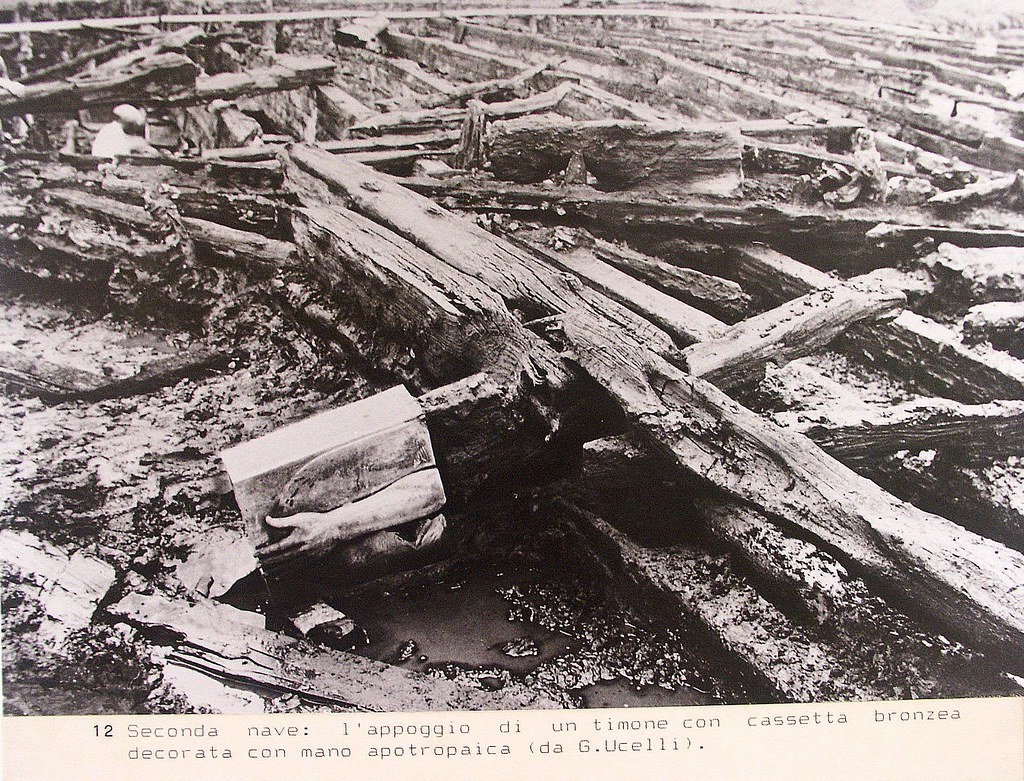
NOTE: The antifex with the hand found on Caligula 's Pleasure Barge. the original apotropaic hand with bronze box found in the relict of the second ship after the discovery (from a photo-panel of the museum) Marco Murgia photo permission used. The next photo is the original "hand" now in the naval museum in Nemi.
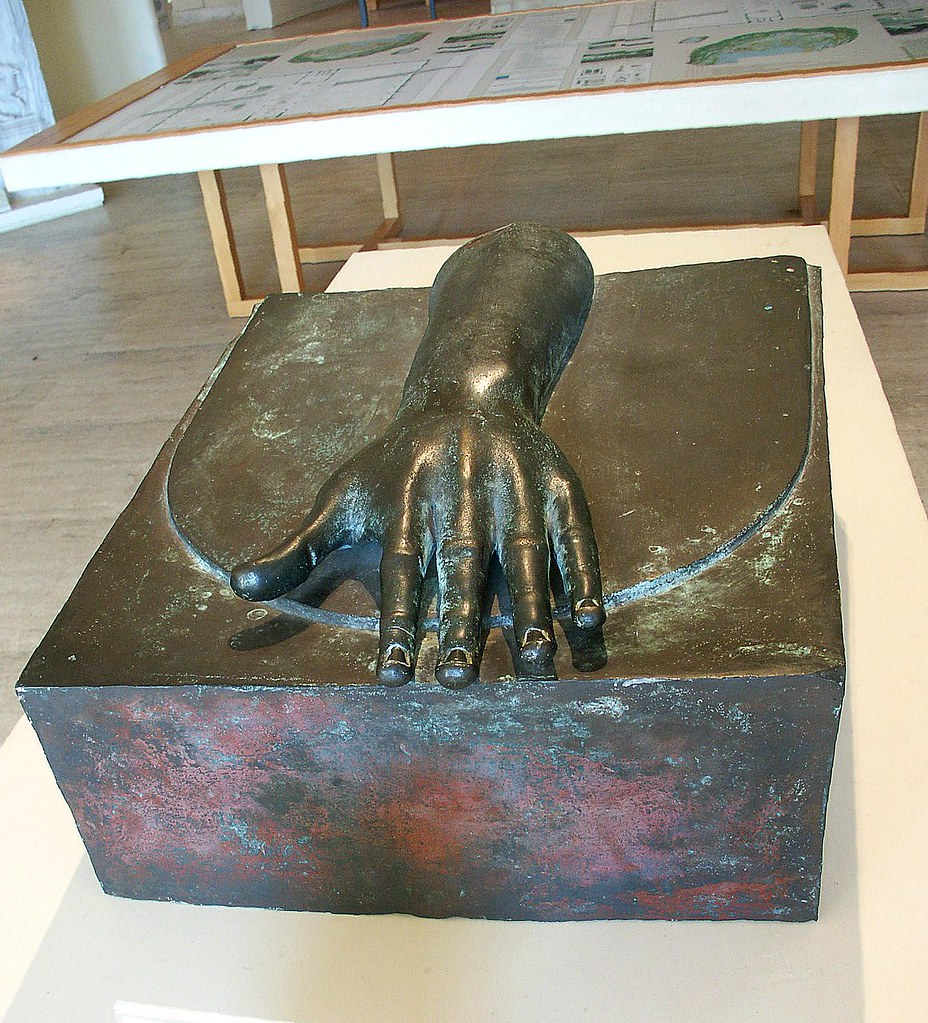
apotropaic hand with bronze box found in the relict of the second Caligulan ship. bronze forearm and open hand, for capping the beams of the ship, one of the few remaining fragments of Caligula 's "pleasure boats" found in the lake of Nemi. Photo courtesy Marco Murgia

View of the first Caligulan ship. The size was amazing. These ships were destroyed by the Nazi 'z in WWII. Photo Marco Murgia.
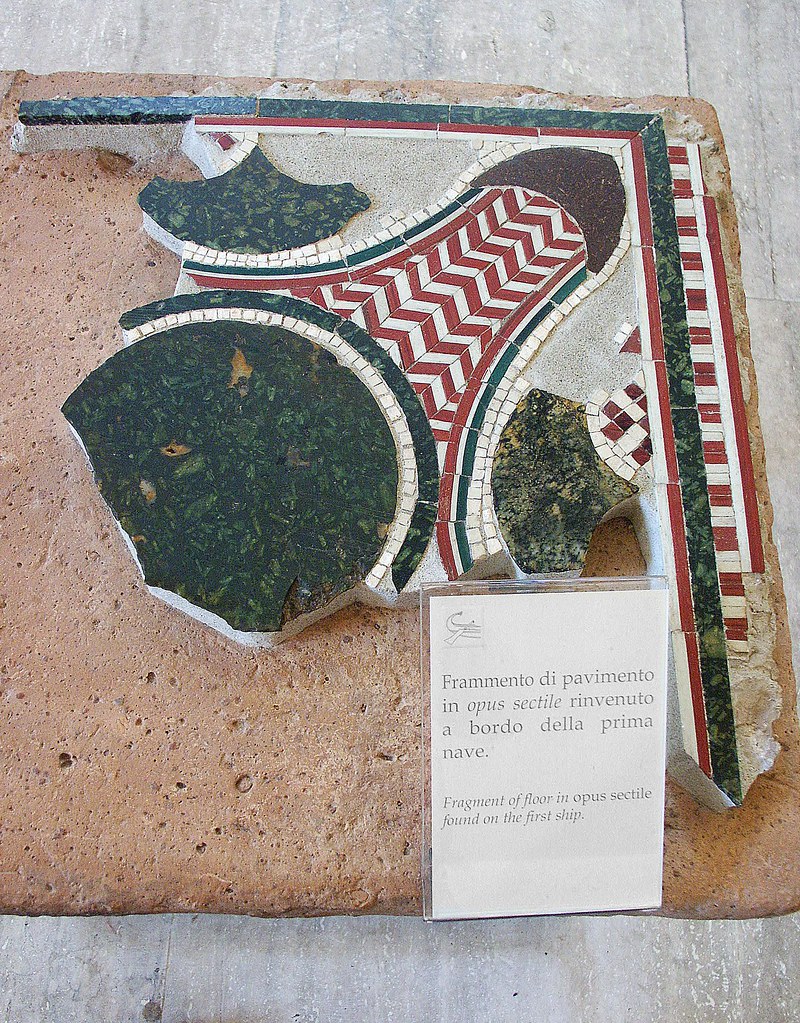
a fragment of opus sectile from the floor of the first Caligula ship. Photo Marco Murgia
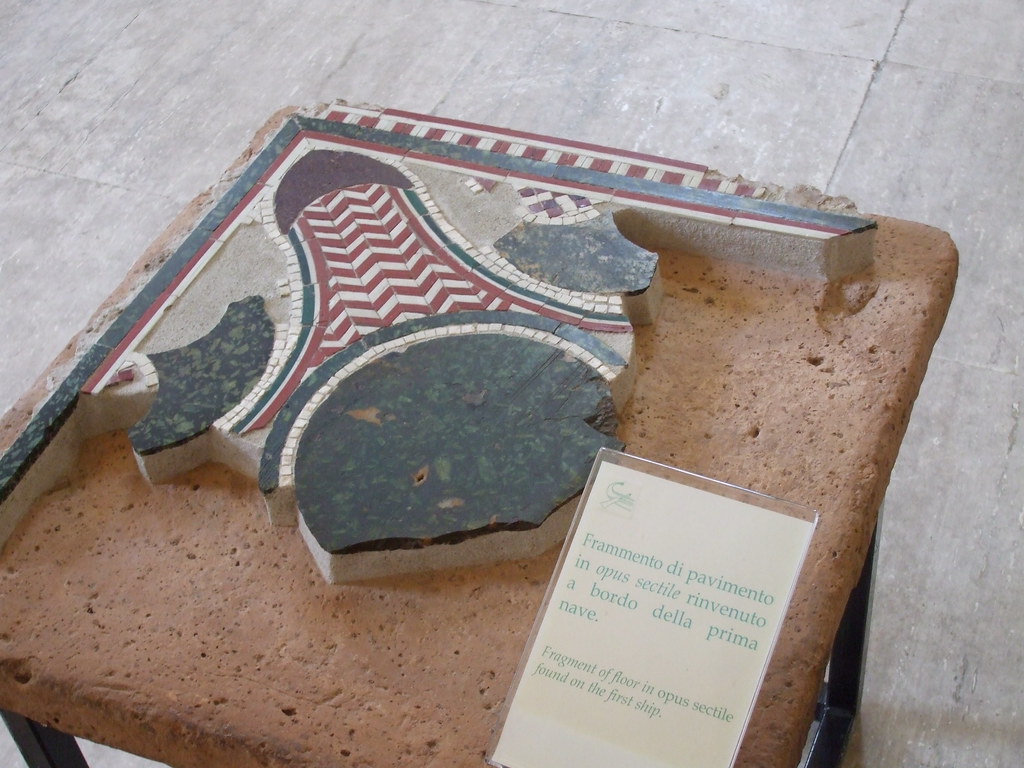
Second photo of above. Marco Murgia photo
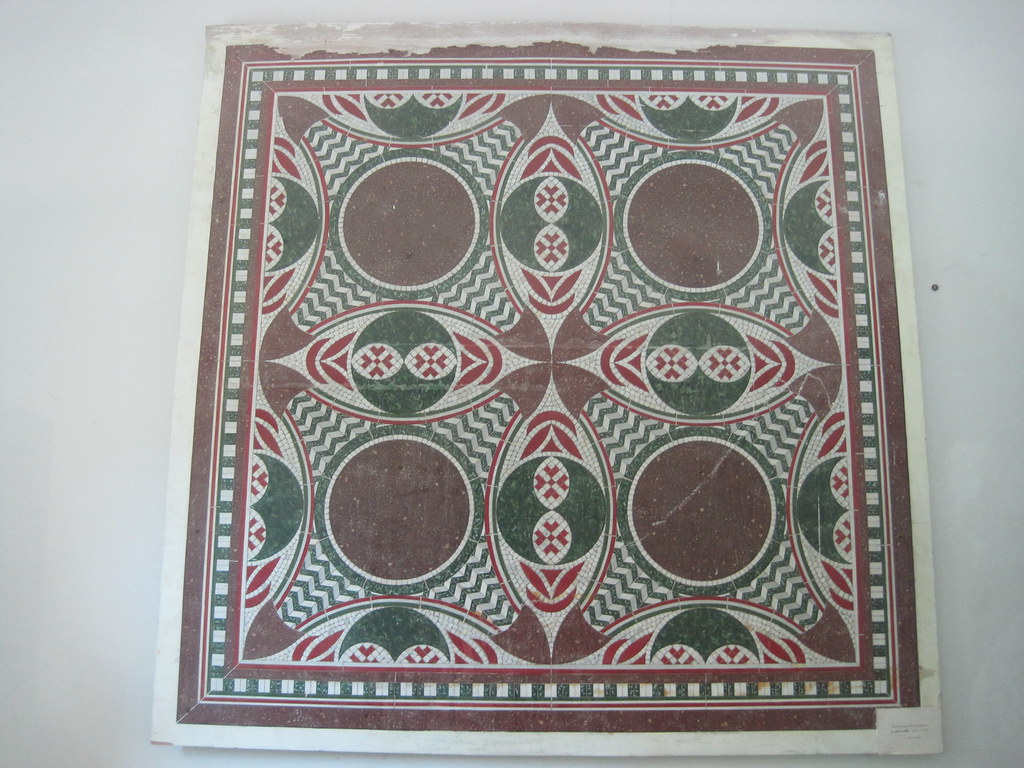
Reproduction of Caligulan tile. Marco Murgia Photo
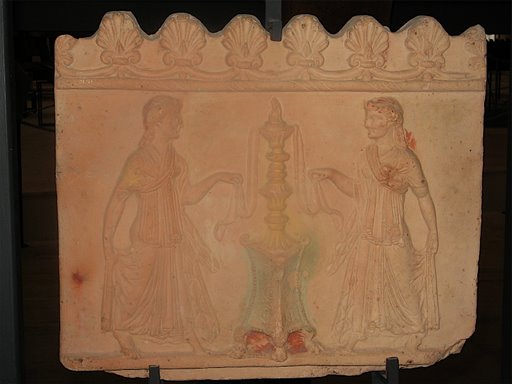
Terracotta figures from Caligulan ship.
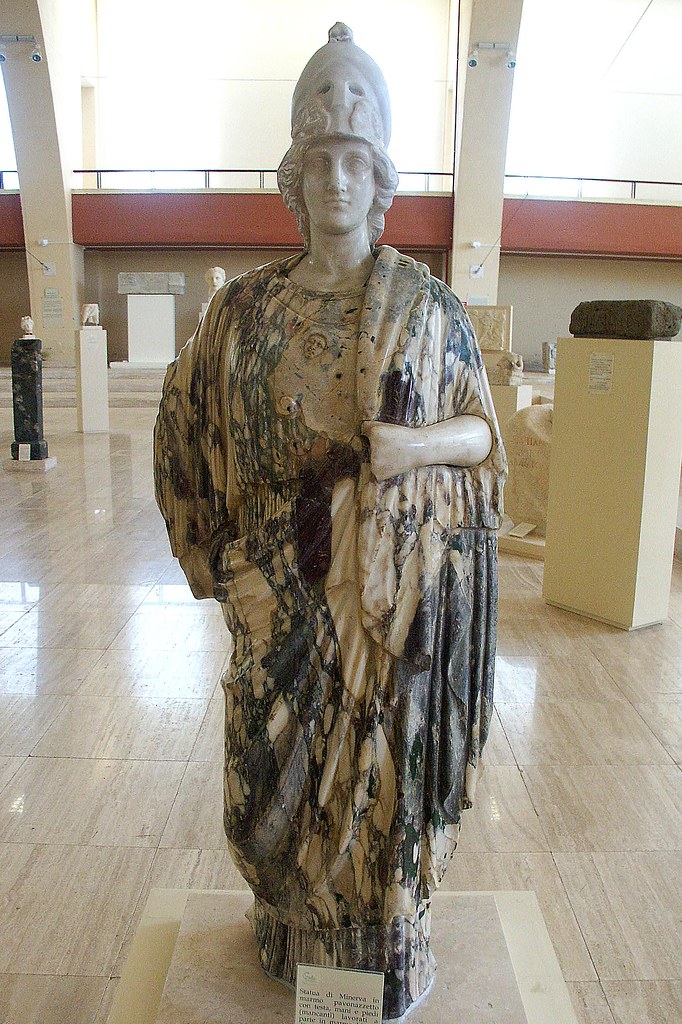
A marble statue of Minerva made in pavonazzetto marble, found without head, hands and feet now made in white modern marble, it 's first century a.C. opera may be from the Diana 's "nemorense" temple in Nemi (it 's a Ruspoli collection piece) From Caligula 's Pleasure ship. photo courtesy Marco Murgia
BRONZE ARTIFACTS FROM CALIGULA 'S PLEASURE BARGES
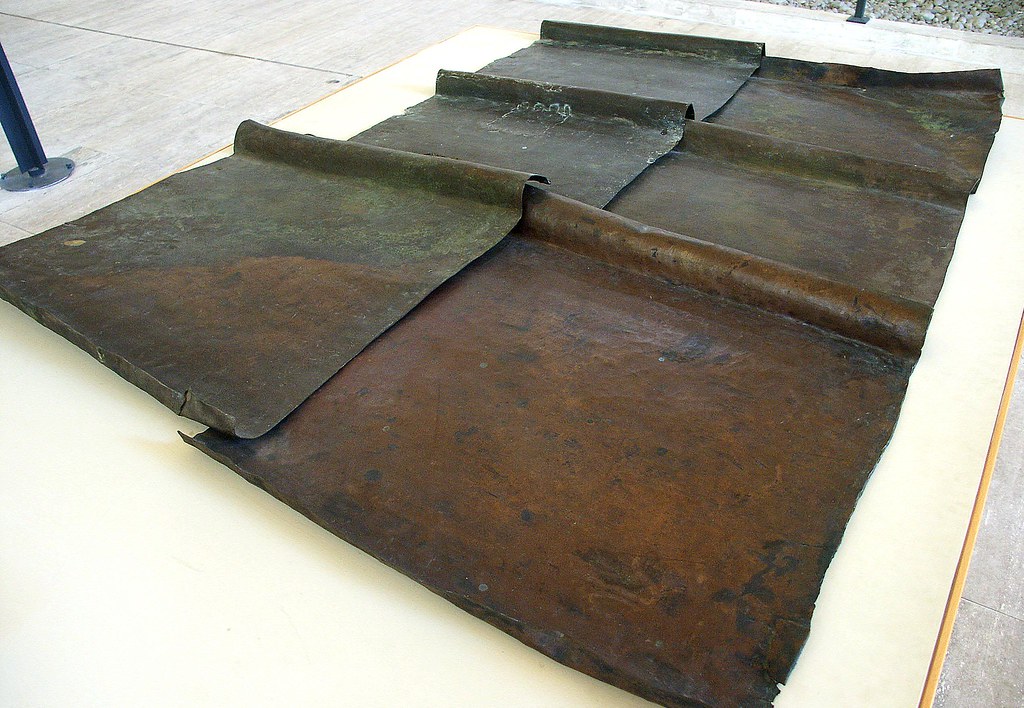
Bronze roof 's tiles from Caligula 's Nemi ship. Courtesy Marco Murgia

Iconography from Caligula 's pleasure barge at Lake Nemi- All the following photos as well as the one above from Jackie Wheeler Dasen. w/permission

































































